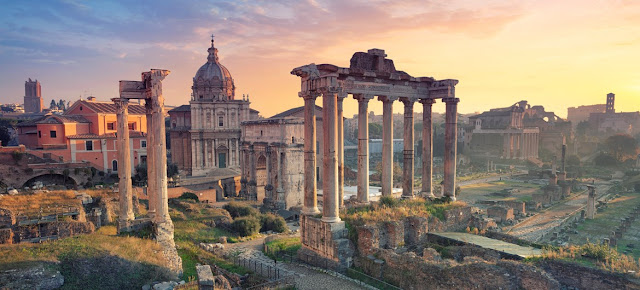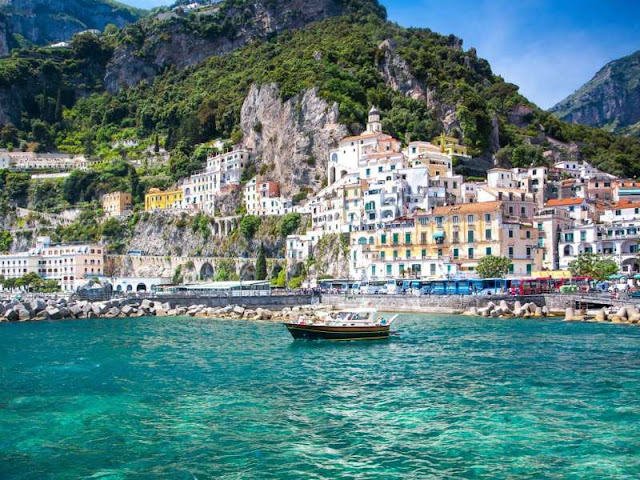8 Best Places to Experience Italy's History
8 Best Places to Experience Italy's History
Italy is one of the countries which had major impacts on world history. Be it the Great Roman Empire, the World Wars or the birth place of Renaissance. Mainly due to its location at the center of Mediterranean trading routes. Italy was subject to some of the most brutal invasions as well as serving as a focal point for creativity and learning.
With its unique history and beautiful architecture, Italy is a popular place for history buffs. All of its historic sites are very well preserved. So get ready to go back in time and take a look back into Italy's History
Here are 8 best places to experience Italy's History.
1. Pompeii and Herculaneum: -
Pompeii and Herculaneum offer an amazing window to what life in Rome must have been like around 2000 years ago. Both these cities were destroyed by the eruption of Mount Vesuvius in 79 AD covering the cities with thick layer of stones, ash, lapilli(glassy lava) and flood of volcanic mud. But as they say, Whatever happens, happens for Good !!! , the remains of these cities were well preserved under the covering of lava.
You can wander around the lanes of these archaeological sites viewing whats left over of their houses, shops and some incredible buildings like a large 20,000 people amphitheater. Some of the major attractions here include the Capitolium, the temple dedicated to the triad of Jupiter, Juno and Minerva.
Pompeii was a popular holiday resort for rich Romans.
You can wander around the lanes of these archaeological sites viewing whats left over of their houses, shops and some incredible buildings like a large 20,000 people amphitheater. Some of the major attractions here include the Capitolium, the temple dedicated to the triad of Jupiter, Juno and Minerva.
Pompeii was a popular holiday resort for rich Romans.
2. The Pantheon: -
Even today, after 2000 years after its construction, the Pantheon is a remarkable building to see. Its spectacular design, proportions, elegance and harmony are a striking reminder of the great Roman Architecture. Even when the great Michelangelo saw this wonder for the first time he said that
It looks like a work of Angels and not Humans.
The most fascinating part of the Pantheon is its large dome. With its diameter of 43.3 m, it is the largest unsupported dome in the world.
The Pantheon is actually a former Roman temple build in 126 AD. However, it is now used as a church dedicated to 'St Mary and the Martyrs' informally known as 'Santa Maria Rotonda'.
3. The Colosseum: -
Being the capital of the Roman Empire, Rome is full of historical sites. But one that stands out among them and has become the identity of Rome is the Colosseum.
The Colosseum also known as the Flavian Amphitheater, is located at the center of the city of Rome. The construction was carried out during the Flavian Dynasty between 72 AD and 96 AD. Its opening was celebrated with 100 days of games and was filled with water for recreation of maritime battles. With a audience capacity of 65,000 people, it is the largest amphitheater ever built.
It was mainly used for gladiatorial contests, public spectacles like mock sea battles, executions, re-enactment of famous battles and dramas based on Classical mythology.
4. Saint Peter's Basilica: -
Saint Peter's Basilica is located in the enclave of Vatican City and is the largest Church in the world. It is regarded as a masterpiece of Renaissance architecture. The church is built on the burial cite of St Peter, on of the 12 disciples of Rome and the first bishop of Rome.
Its construction was carried out for 120 years between 1506 to 1626 with contributions from Donato Bramante, Michelangelo, Carlo Maderno and Gian Lorenzo Bernini. The most notable feature about the church is its dome which rises up 136 meters making it the tallest dome in the world.
It has many historical associations with the Early Christian Church, the Papacy, the Protestant Reformation and the Catholic Counter Reformation.
5. Saint Mark's Basilica: -
St Mark's Basilica is located in the beautiful city of Venice and is known for its awe inspiring gold and bronze mosaic interiors.
This Basilica is mainly known for its mosaics. There are more than 85,000 square feet of mosaics in St Mark's Basilica. Lets say its enough to over almost 1.5 American football fields. All the mosaics were done in 8th century and with gold.
There is also a lot of treasure in the basilica. Most of which came from the crusades from Constantinople(modern day Istanbul). These include the four bronze horses, the idol of Madonna Nicopeia, enamels of golden Altar piece, relics, crosses and chalices.
The Pala d'Oro, a Byzantine altar screen of gold is studded with hundreds of gems. They include 1300 pearls, 300 emeralds, 300 sapphires, 400 garnets, 100 amethysts and rubies and topazes.
6. Santa Maria Del Fiore: -
The Santa Maria Del Fiore is a prominent structure of elegant skyline of Florence. Inspired by the Pantheon in Rome, the dome of the church was designed by Filippo Brunelleschi. The dome is made up of almost 4 million bricks and remains the largest brick dome till date. The cathedral took almost 140 years to build mainly due to its complex dome structure.
The cathedral complex is located in Piazza del Duomo, which includes the Baptistery and Giotto's Camapanile. These three builings together constitute a UNESCO World heritage site covering the historical center of Europe.
7. The Leaning Tower of Pisa: -
The Leaning Tower of Pisa is a freestanding bell tower in the Field of Miracles next to Pisa's Cathedral. It is known worldwide for its unintended tilt. The tower began tilting in 12th century during its construction due to its sandy and feeble foundations. The tower was eventually finished in 1360. The height of the tower is around 186 feet and has almost 300 steps.
The restoration work was carried out in 20th century have ensured that the tower won't lean more and topple over.
The leaning tower of Pisa represents the last element in the ceremonial compliment of Piazza dei Miracoli. The other elements are the Cathedral of Pisa, the Baptistery and the Monumental Cemetery.
Like the Leaning Tower, the Cathedral and the Baptistery are also sinking due the soft soil. Galileo was baptized in this baptistery in 1565.
8. The Valley of Temples: -
The Valle dei Templi or the Valley of Temples is a archaeological site in Agrigento, Sicily, Southern Italy. It is one of the most outstanding examples of Greek art and architecture and a national monument of Italy. It is also the world's largest archaeological site with an area of 1300 hectares.On the site there are seven temples in the Doric style dating back to 5th century AD.
The excavation and restoration of the temples was carried out by the archaeologist Domenico Antonio Lo Faso Pietrasanta, from 1809 through 1812.
The highlight of the valley if the Temple of Concordia, an extremely well preserved temple with 6 column triangular pediment facade.
The other temples are the Temple of Juno Lacinia, Temple of Asclepius, Temple of Heracles, Olympeion Field, Temple of Dioscuri and the Temple of Hephaetus.











Comments
Post a Comment